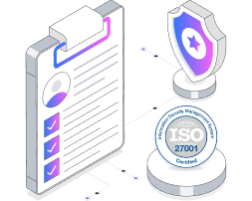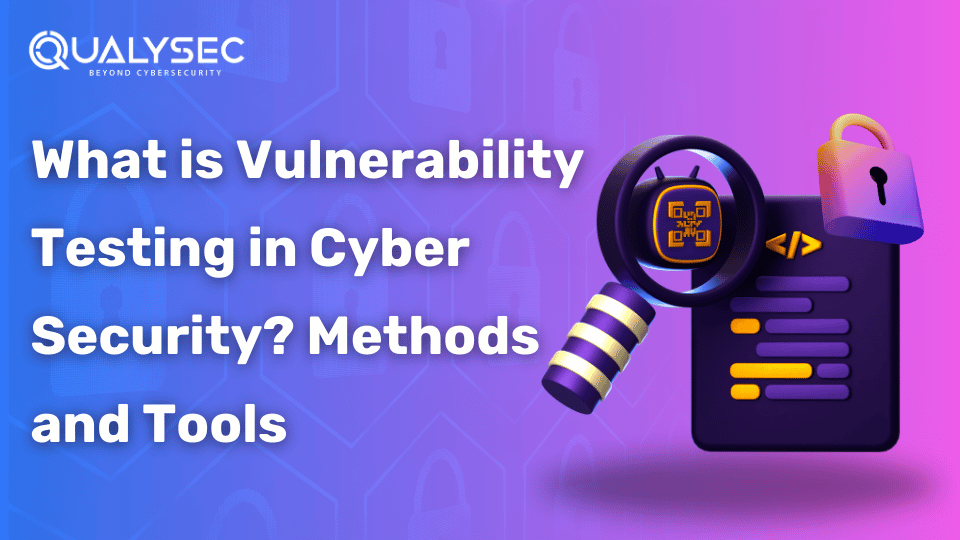Vulnerability Testing in Cyber Security: Types, Tools and Methods
Vulnerability testing in cyber security is the process of testing applications, networks, and other digital systems to find security vulnerabilities that can lead to cyberattacks. Even the most secure IT systems can have vulnerabilities that can expose them to hackers. Constantly changing threat landscape, AI tools, and lack of security measures all call for regular vulnerability testing. One of the biggest cyberattacks occurred on the Group Health Cooperative of South-Central Wisconsin (GHC-SCW) recently. In January 2024, a hacker gang breached their network and stole the personal and medical information of over 500,000 individuals. With roughly 2,200 attacks occurring every day, organizations need to prioritize vulnerability testing in cyber security to find entry points that cause these attacks. This blog will discuss this cybersecurity practice in detail, including its significance, tools, and processes. What is Vulnerability Testing in Cyber Security? Vulnerability testing, also called vulnerability assessment or scanning, is a cybersecurity practice of identifying, evaluating, and assessing vulnerabilities or flaws in applications, networks, and other digital assets. Vulnerability testing in cyber security aims to identify security weaknesses that hackers can exploit for unauthorized access. Additionally, the test provides actionable insights to address the found vulnerabilities. The process uses various tools and techniques to scan and analyze the target environment for potential vulnerabilities. This may include automated scanning tools, manual penetration testing, code reviews, etc. The main objective of cybersecurity vulnerability testing is to identify security vulnerabilities like misconfigurations, insufficient access controls, insecure network protocols, lack of authentication and authorization, or known weaknesses in software components. What are the 4 Main Types of Vulnerabilities in Cyber Security? We need to understand the types of vulnerability testing in cyber security to protect applications and data from attacks. Regular vulnerability testing can help prevent these issues and protect the digital assets of the business. What is the Difference Between a PenTest & a Vulnerability Test? Pen tests (or penetration tests) and vulnerability tests are often confused with the same service. While both these tests aim to find security vulnerabilities in digital systems, their approaches and techniques are different. Vulnerability assessment and penetration testing in cyber security are crucial for identifying weaknesses. A pen test is an in-depth hands-on process by an ethical hacker that tries to identify and exploit vulnerabilities in a system. A vulnerability test is an automated scanning of applications and systems that looks for potential vulnerabilities. Let’s check out the brief differences. Aspect Pen Test Vulnerability Test Purpose Simulates real-world attacks to identify exploitable vulnerabilities. Scans systems to identify known vulnerabilities without exploiting them. Depth of Testing Deep and thorough, which involves manual testing and exploitation techniques. Broad and automated. Focuses on identifying as many vulnerabilities as possible Approach Offensive – Simulating techniques of real attackers. Defensive – More focus on identifying and reporting potential vulnerabilities. Tools Used Manual tools and techniques, along with automated tools Mostly automated tools and scanners. Skills Required Requires skilled testers with high knowledge of hacking techniques. Can be conducted by individuals with less hacking skills using automated tools. Results Detailed report on exploitable vulnerabilities, along with their impact level and remediation methods. List of identified vulnerabilities, often with remediation advice. Frequency Usually conducted 1 – 2 times a year. Performed more frequently, once every month or two. Focus Areas Includes both known and unknown vulnerabilities, including testing the resilience of the system against attacks. Primarily focuses on known vulnerabilities and misconfigurations How Does Vulnerability Testing Work? Vulnerability testing in cybersecurity involves using automated scanning tools to find security vulnerabilities in digital assets, such as applications, networks, cloud, APIs, etc. The automated tool thoroughly analyses the target system and offers a detailed report after completion. This report includes the vulnerabilities found and actionable recommendations to address and mitigate these threats. These tools have extensive databases with information about known vulnerabilities (such as misconfigurations and information disclosure). As a result, they can effectively pinpoint potential vulnerabilities across the system architecture, including networks, applications, containers, and data. Vulnerability Testing Process Want to perform vulnerability scanning and penetration testing for your applications? We have secured over 450 assets of over 110 different clients worldwide. Get comprehensive security testing for all your prized digital assets today! Talk to our security expert by clicking the link below. Talk to our Cybersecurity Expert to discuss your specific needs and how we can help your business. Schedule a Call Top 5 Methods for Vulnerability Testing in Cyber Security There are different areas where you can conduct vulnerability testing in cybersecurity. However, there are 5 most crucial methods where organizations must conduct regular testing, such as: 1. Network Testing A network-based vulnerability testing identifies vulnerabilities in network infrastructure, such as firewalls and other network components. These assessments typically involve using specialized software tools to scan the network for security weaknesses. These tools may use various methods to detect vulnerabilities, such as: 2. Application Testing It is the process of examining security weaknesses in software applications ( both mobile & website vulnerability tests ). It typically involves testing the application for known vulnerabilities like misconfigurations and injection attacks. Application testing is primarily conducted by combining both automated scanning and manual penetration testing. Common application vulnerabilities include: 3. API Testing It is performed to identify and address potential security risks in application programming interfaces (APIs). The process detects vulnerabilities in the API’s design, implementation, and deployment. The end goal is to ensure that the API is secure and resilient against cyberattacks. 4. Cloud Testing A cloud-based vulnerability testing involves detecting vulnerabilities in cloud infrastructure and services, such as: Since cloud computing stores sensitive data and is used in most business operations, regular testing is required to protect the environment from malicious actors. 5. Database Testing In database testing, the tools meticulously analyze databases for security weaknesses. They check for weak authentication mechanisms, misconfigurations, outdated software versions, and improper access controls. Additionally, they check whether proper encryption measures are implemented or not. Detected vulnerabilities are documented in a report that is




